Triathlon Distances:A Guide For Sports Enthusiasts
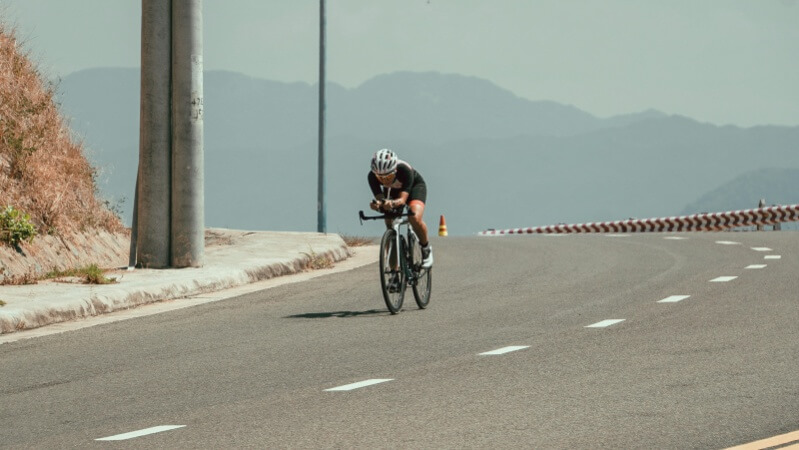
Triathlon distances are known for their considerable variation, catering to different levels of athleticism and endurance.
Events like the sprint distance triathlon, which are shorter in nature, have gained widespread popularity. These races usually extend between 15 and 16 miles overall.
Conversely, at the extreme end, the renowned full Ironman stands as the epitome of long-course triathlons, encompassing an arduous journey of over 140.6 miles.
For a detailed overview, refer to the accompanying chart. It delineates the distances for each type of triathlon and the individual segments within them.
Triathlon lengths in miles and kilometers

The length of a triathlon? It’s varied by distance
Events such as Sprint triathlons, classified as short-course, typically feature a half-mile swim, a bike route of 12.4 miles (or 20km), and a run of 3.1 miles (or 5km), cumulatively nearing 16 miles. Completing these usually takes between 1 and 2 hours.
Conversely, the long-course Ironman triathlons represent a stark contrast in terms of distance, amassing a total of 140.6 miles spread across the disciplines. An athlete may spend anywhere from 8 to 16 hours finishing an Ironman, largely dependent on their conditioning and proficiency.
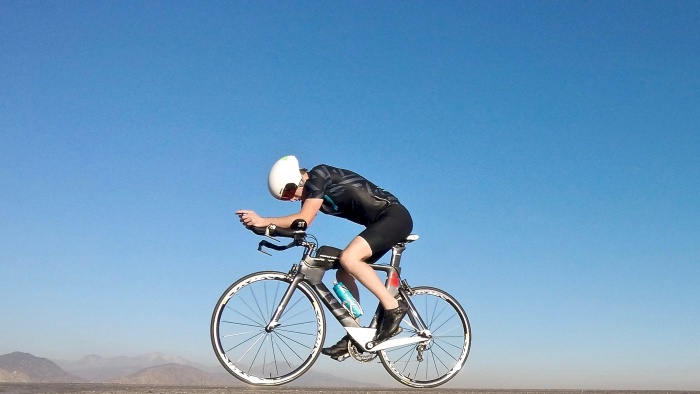
Given this range, answering “how long is a triathlon?” isn’t straightforward.
Many novices initially delve into sprint distance triathlons, but as their enthusiasm grows, they typically progress to Olympic distance and long-course triathlons throughout their athletic journey.
Presented here are details on the typical distances for different types of triathlons, along with the average completion times for both amateur and professional level athletes. Additionally, we provide essential training tips, offering a glimpse into what to anticipate as you embark on each triathlon distance.
Sprint triathlon overview
Starting with a sprint triathlon is often the initial step for those new to the triathlon world. This race involves swimming 0.5 miles (750 meters/2,460 feet), biking 12.4 miles (20 kilometers), and running 3.1 miles (5 kilometers). It serves as an ideal introduction for novices, while also providing a substantial challenge for experienced athletes to enhance their transition skills and accumulate more racing exposure.
Typical sprint triathlon completion times
The term “sprint” might appear ambitious for a race that can extend beyond 2 hours. However, from a professional athlete’s viewpoint, it’s different. In conditions varying in elevation and terrain, a sprint triathlon could take approximately 1 hour or less for professionals. In contrast, Ironman distance triathlons often span between 8 and 10 hours for elite athletes.
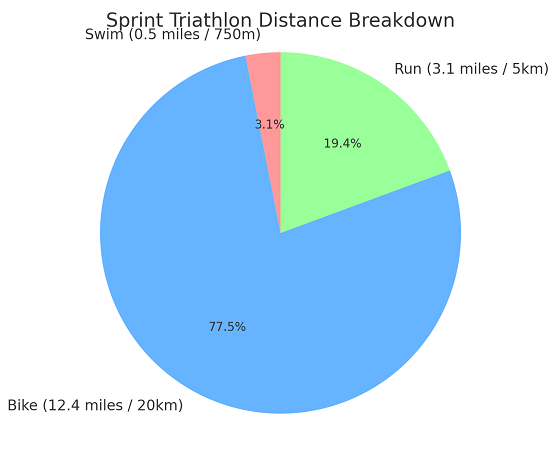
Analyzing each segment of a sprint triathlon reveals a strategy of intense, sustained effort (unlike the steady, lower-intensity approach typical in Ironman). This means athletes can usually sustain an anaerobic or higher energy level throughout a race lasting 60-90 minutes.
In contrast, training for long-course triathlons demands more focus on endurance and aerobic conditioning, involving low-intensity but high-volume workouts.
Endurance is key in both sprint and Olympic triathlons, yet competitive athletes prioritize speed training, specific drills, and swift transitions. Excelling in swimming is crucial for a strong start, making efficient swim techniques essential for triathlon success.
However, it’s important to note that biking and running form the bulk of the distance in sprint or super sprint triathlons. Athletes adept at cycling and running can compensate significantly, even if their swimming performance is average or they lack a specialized triathlon wetsuit.
Olympic triathlon distance breakdown
The Olympic triathlon consists of a 0.93-mile (1.5-kilometer) swim, a 24.8-mile (40-kilometer) bike ride, and a 6.2-mile (10-kilometer) run. This makes it precisely twice as long as a sprint triathlon.
For those who have seen an Olympic or ITU triathlon event on TV or online, the high level of intensity and efficiency demonstrated by professional athletes is evident. Transitions are completed in just seconds, and the overall pace is often impressively rapid, typically just over a 5-minute mile running pace.
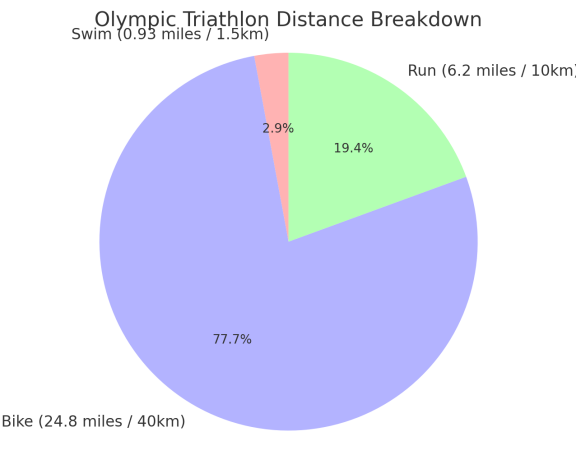
Typical Olympic triathlon completion times
Elite professionals usually complete Olympic triathlons in about 2 hours or less, with the current men’s record slightly above 1 hour and 46 minutes.
For leading age group competitors, the typical duration for an Olympic distance triathlon falls between 2 and 2 ½ hours.
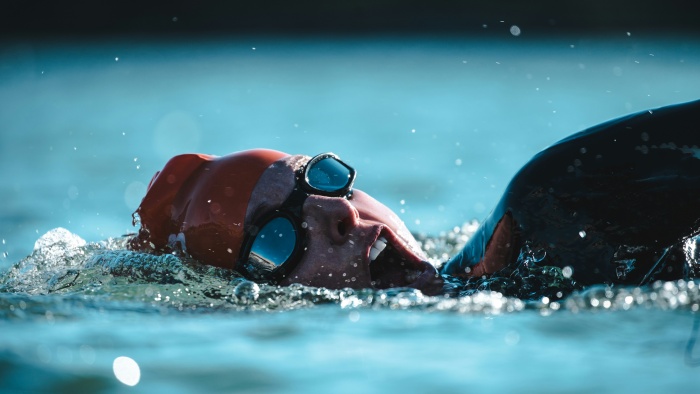
These events demand careful pacing, energy conservation, and ample endurance. Being twice the length of a sprint triathlon, athletes often spend over an hour cycling, followed by a 10 kilometer (6.2 miles) run.
Advancing to the Olympic distance necessitates a deeper commitment to training. Early season investment in endurance building, strength enhancement, and injury prevention is crucial for athletes at every level.
While speedwork remains important for competitive triathletes, it’s less so for beginners transitioning from sprint distances, where the focus is more on overall advancement.
Half-Ironman & Full-Ironman distance overview
Long-course triathlons, also known as “Iron-distance” events, encompass both Ironman and half-Ironman distances. The half-Ironman, often referred to as “70.3,” denotes the total mileage of the swim, bike, and run combined, while the full-Ironman distance totals 140.6 miles.
A half-Ironman or 70.3 includes a swim of 1.2 miles (1.9 kilometers), a bike leg of 56 miles (90 kilometers), and a half-marathon run of 13.1 miles (21.09 kilometers).
Parallel to the relationship between sprint and Olympic distances, a full-Ironman triathlon doubles each segment of 70.3 distance. This means an Ironman includes a 2.4-mile (3.9 kilometers) swim, a 112-mile (180.2 kilometers) bike course, and a 26.2-mile (42.2 kilometers) marathon run.

At the elite level, half-Ironman triathlons approach speeds akin to sprint distances. The record for the fastest 70.3 was set by Jan Frandeno with a time of 3:36:30 during the 2018 Ironman World’s in South Africa, where he achieved 5:05 mile run splits, setting a new world record.
This pace is comparable to top Olympic distance professionals like Javier Gómez and Alistair Brownlee, who have successfully transitioned to Iron-distance competitions. Similarly, Tim Don holds the record for the fastest full Ironman distance with a time of 7:40:23 in 2017.
It’s crucial to remember that Ironman distance triathlons are 7 times longer than sprint triathlons, which significantly affects the volume and intensity of training required.
Utilizing equipment such as an aerodynamic helmet, a high-quality bike, and a wetsuit can be incredibly beneficial.
If you’re considering entering a long-course triathlon or seeking coaching advice, explore these training tips for essential guidance.
Typical 70.3/Half-Ironman completion times
For professionals, average times for 70.3 races fall within 4-5 hours, while full Ironman events typically take 8-10 hours. Age-group athletes, however, often require more time on the course. Top age-group participants might complete moderately challenging 70.3 courses in 5-6 hours and full Ironmans in 10-12 hours. Athletes with limited training time due to busy schedules may take upwards of 6-7+ hours for a half Ironman and over 13 hours for a full Ironman distance.
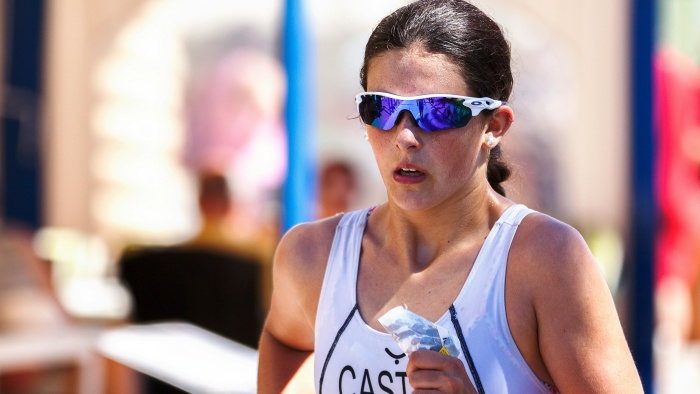
Generally, 70.3 triathlons are more accessible to amateur and age-group athletes, as the commitment and training intensity for full Ironman events are significantly higher.
Preparing to swim more than 2 miles, bike over 100 miles, and run a marathon is a considerable endeavor for most athletes. Adding in family, work, and other life responsibilities, managing time for Ironman training can be challenging.
Both amateur and professional triathletes often see immense benefits from coaching. Collaborating with a triathlon coach who tailors training plans to align with an athlete’s goals, abilities, and lifestyle is invaluable. Engaging an Ironman coach can provide not only motivation and accountability but also structured training regimens specifically designed for an athlete’s individual objectives.
Triathlon distances FAQ
Before you toe the line at a triathlon, understanding what you’re committing to is crucial. Success and overall enjoyment in a race are heavily influenced by preparation, planning, and your fitness level. Here, we address some common questions about triathlon distances.
What’s the best distance for my first triathlon?
Most beginners opt for a Sprint distance for their inaugural triathlon. While Sprint triathlons’ lengths can vary, they typically feature a 0.5-mile (750m) swim, a 12.4-mile (20km) bike, and a 3.1-mile (5km) run. For an even shorter challenge, there are super-Sprint triathlons with reduced distances in each segment, like a 3km run instead of a 5km.
What’s the distance between an Ironman triathlon?
Regarded as the apex of triathlon distances, an Ironman consists of a 2.4-mile (3.9-km) swim, 112-mile (180.2-km) bike, and a 26.2-mile (42.2-km) marathon run, totaling 140.6 miles (226.3 kilometers). Ironman, the main organizer, also hosts 70.3 or half-Ironman races, which are precisely half the distance of the full Ironman.
What are typical Ironman completion times?
Analyzing Ironman finisher data over five years (2015-2019) provides insight into average completion times for both male and female age groupers and professionals, including swim, bike, run, and transition times.
Ironman age group men: 12:25
- Swim: 1:15
- Bike: 6:05
- Run: 4:40
- T1+T2: 0:25
Ironman age group women: 13:30
- Swim: 1:20
- Bike: 6:40
- Run: 5:05
- T1+T2: 0:25
Ironman professional men: 8:40
- Swim: 0:52
- Bike: 4:35
- Run: 3:04
- T1+T2: 0:09
Ironman professional women: 9:35
- Swim: 0:59
- Bike: 5:05
- Run: 3:21
- T1+T2: 0:10
Triathlon leg distances—what are they?
Each leg of a triathlon is defined by specific distances, detailed in miles (and kilometers) as follows:
- Sprint Triathlon: Swim 0.5 miles (750m), Bike 12.4 miles (20km), Run 3.1 miles (5km)
- Olympic Triathlon: Swim 0.93 miles (1.5km), Bike 24.8 miles (40km), Run 6.2 miles (10km)
- ITU Long Course Triathlon: Swim 1.86 miles (3km), Bike 49.6 miles (80km), Run 12.4 miles (20km)
- Half Ironman / 70.3 Triathlon: Swim 1.2 miles (1.9km), Bike 56 miles (90km), Run 13.1 miles (21.09km)
- Full Ironman Triathlon: Swim 2.4 miles (3.8km), Bike 112 miles (180km), Run 26.2 miles (42.195km)
Below is an image for quick reference of this information.
How far is the run in a triathlon?
The run, forming the final leg of a triathlon, varies in distance as per the race type:
- Sprint Triathlon: 3.1 miles (5km) Run
- Olympic Triathlon: 6.2 miles (10km) Run
- ITU Long Course Triathlon: 12.4 miles (20km) Run
- Half Ironman / 70.3 Triathlon: 13.1 miles (21.09km) Run
- Full Ironman Triathlon: 26.2 miles (42.195km) Run
What’s the distance for the bike leg in a triathlon?
In a standard triathlon, the bike leg, which is the second segment, includes these distances for each race:
- Sprint Triathlon: 12.4 miles (20km) Bike
- Olympic Triathlon: 24.8 miles (40km) Bike
- ITU Long Course Triathlon: 49.6 miles (80km) Bike
- Half Ironman / 70.3 Triathlon: 56 miles (90km) Bike
- Full Ironman Triathlon: 112 miles (180km) Bike
Preparing for your triathlon
Start with a Training Plan: Tailor your training to the triathlon distance you’ve chosen. Include swimming, biking, and running workouts in your schedule, gradually increasing intensity and distance.
- Focus on Transitions: Practice transitioning between swimming, biking, and running. Efficient transitions can save valuable time during the race.
- Invest in a Quality Bike Helmet: Safety is paramount. A good bike helmet, such as the ‘XYZ Aerodynamic Triathlon Helmet’, not only provides crucial protection but also enhances aerodynamics. Look for helmets with good ventilation, a comfortable fit, and aerodynamic design.
- Swimming Efficiency: Especially for beginners, improving swimming technique can significantly impact your overall performance. Consider taking swimming lessons or joining a swim club.
- Cycling and Running Training: Allocate specific days for bike and run training. Include long-distance rides and runs, speed work, and hill training.
- Nutrition and Hydration: Develop a nutrition plan for before, during, and after training and racing. Stay hydrated and experiment with energy gels or bars to understand what works best for your body.
- Rest and Recovery: Balance your training with adequate rest. Overtraining can lead to injuries and burnout.
- Join a Triathlon Club or Group: Training with a group can provide motivation, advice, and structured workouts.
- Mental Preparation: Triathlons are as much a mental challenge as a physical one. Develop strategies to stay focused and positive.
- Race Simulation: Before your actual race, simulate race conditions in training to prepare yourself mentally and physically.

Conclusion
Triathlon distances, with their diverse range, offer a unique challenge and adventure to athletes at all levels. Whether you are just starting with a sprint triathlon or aiming for the full Ironman, each distance presents its own set of demands and rewards.
The key to a successful triathlon experience lies in thorough preparation, from choosing the right event to investing in essential gear like a quality bike helmet, and from honing your skills in each discipline to balancing training with rest and recovery.
Remember, the journey of a triathlete is as much about personal growth and perseverance as it is about crossing the finish line.
Each training session, each race, each mile covered brings its own sense of achievement and propels you forward in this inspiring endurance sport.
As you embark on or continue your triathlon journey, embrace the challenges and celebrate the triumphs, for each step brings you closer to your goals in this multifaceted and rewarding athletic endeavor.

